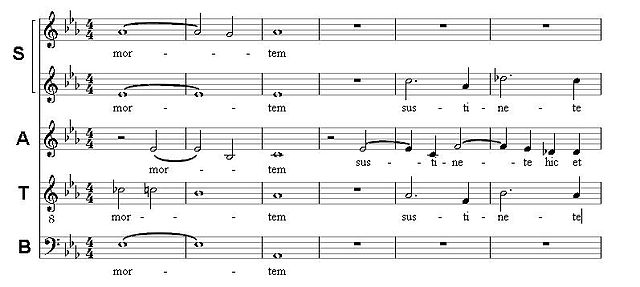In music, the BACH motif is the motif, a succession of notes important or characteristic to a piece, B flat, A, C, B natural. In German musical nomenclature, in which the note B natural is named H and the B flat named B, it forms Johann Sebastian Bach's family name. One of the most frequently occurring examples of a musical cryptogram, the motif has been used by countless composers, especially after the Bach Revival in the first half of the 19th century.
"b–a–c–h is beginning and end of all music" (Max Reger 1912)
Excerpt of the Tristis est anima mea motet attributed to Kuhnau (F minor)
Bach's E minor arrangement of the same passage: B–A–C–H appears in the alto voice
B–A–C–H (and its inversion) in the last bars of the Augmentation Canon of BWV 769
The Art of Fugue, or The Art of the Fugue, BWV 1080, is an incomplete musical work of unspecified instrumentation by Johann Sebastian Bach. Written in the last decade of his life, The Art of Fugue is the culmination of Bach's experimentation with monothematic instrumental works.
Title page of the first edition, 1751
The final page of the Fuga a 3 Soggetti fragment, with a handwritten note by Carl Philipp Emanuel Bach that the composer died at this point.






